
Common menu bar links
Institutional Links
-
Translation Bureau
Language Portal of Canada
-
TERMIUM Plus®
-
Titles
- Aboriginal Titles
- Adjective/Adverb Aptitude
- A Look at Terminology Adapted to the Requirements of Interpretation
- Alphabet soup
- A Passion for Our Profession
- Apostroph-Ease
- A Procedure for Self-Revision
- A Question of Sound, not Sight
- Are You Begging the Question?
- Are you concerned about data security?
- Assessing translation memory functionalities
- A trilingual parliamentary glossary
- Baudelaire translated in prison by a translation professor
- Big bang and gazing into the twitterverse
- Bill Gates Protecting the Spanish Language?
- Boost Your eQ (E-mail Intelligence)
- Brave New World: Globalization, Internationalization and Localization
- Bridging the Gap
- Canada’s jurilinguistic centres
- Canadian Bijuralism: Harmonization Issues
- Cancelling Commas: Unnecessary Commas
- Changing Methodologies: A Journey Through Time
- Character Sets and Their Mysteries. . .
- Clear and effective communication for better retention of information
- Clear and effective communication: Make your readers’ task easier
- Clear and Effective Communication: Reducing the Level of Inference
- Closing in and trailing off: More digressions in punctuation
- Cloud computing
- Comashes and interro-what’s‽: Digressions in punctuation
- Commas Count: Necessary Commas
- Conference Interpretation: A Small Section with a Big Mission
- Controlling Emphasis: Coordination and Subordination
- Coping with Quotation Marks
- Corpus use and translating
- Don’t throw in the towel!
- Dubious Agreement (Part I)
- Dubious Agreement (Part II)
- Email: At once a blessing and a curse
- Emergence of New Bijural Terminology in Federal Legislation
- English Then and Now
- English Usage Guides (1974, vol. 7, 4)
- English Usage Guides (1974, vol. 7, 5)
- English Usage Guides (1974, vol. 7, 6)
- Evaluating Interpreters at Work — or Trying Not to Feel Superfluous
- Excuse Me, Have You Misplaced Your Modifier?
- FAQs on Writing the Date
- FAQs on Writing the Time of Day
- Fifty Years of Parliamentary Interpretation
- Flotsam and Jetsam of Question Period
- Forty Years of Development in the Blink of an Eye
- From book crossing to wikis
- From brand names to the smart grid
- From catchphrases to unfriend
- From Ocean to Ocean: Names of Undersea Features in the Area of the Titanic Wreck
- Further questions from the inbox
- Gender-neutral writing (Part 1): The pronoun problem
- Gender-neutral writing (Part 2): Questions of usage
- Getting to the point with bullets
- Globalization and the Forgotten Language Professionals
- Grammar Myths
- Green Buildings: Passive Solar Design
- High-Tech Translation in the Information Age
- How English has been shaped by French and other languages
- How to improve your Internet conversations
- Hyphens and Dashes—The Long and the Short of It
- Hypothetically Speaking: The English Subjunctive
- In future or in the future: What’s the difference?
- Introduction to macros for language professionals
- Irish Terminology Planning
- Is dictation outmoded?
- It’s a Long Way from Tickle Bay to Success
- "It’s very fun" may no longer be very funny
- Jurilinguistic Management in Canada
- Latin American Idiomatic Expressions
- Less is More: Eliminating on a… basis
- "literacy" and "information literacy"
- Machine translation in a nutshell
- Mankind’s Mother Tongue in the 24th Century
- More on abbreviations
- More Questions from the Inbox
- My quest for information in 2010
- National languages and the acquisition of expertise in technical translation
- Neologisms in dictionaries
- Neologisms then and now
- New questions from the inbox
- New words and novelties
- Old Church Slavonic: It Reads Like a Novel… Almost!
- Online and Offline: To Hyphenate or Not
- Open letter to young language professionals
- Pan-African Glossary on Women and Development
- Parallelism: Writing with Repetition and Rhythm
- Passive Voice: Always Bad?
- Personification of Institutions
- Plain Language: Breaking Down the Literacy Barrier
- Plain Language: Creating Readable Documents
- Plain Language: Evaluating Document Usability
- Plain Language: Making Your Message Intelligible
- Podcasting and Parkour: A Look at 2005
- Portmanteau words
- Prepositional usage with disagree
- Pronoun Management 101
- Pronouns: Form Is Everything
- Publishing in the digital era and expressions in the news
- Punctuation Myths
- Punctuation Pointers: Colons and Semicolons
- Putting It (Even More) Plainly
- Putting It Plainly
- Quasquicentennial
- Questions from the Inbox
- Realistic dreams of a language professional
- Résumés: Up Close and Personal
- Some Thoughts on the Translation of "Volet" into English
- Standing Order 21—We go in hopeful and come out thankful
- Style Myths
- Technical Accuracy Checks of Translation
- That and Which: Which is Which?
- The alchemy of words: Transforming “Le vaisseau d’or” into “The Ship of Gold”
- The Auxiliary Verbs "Must", "Need" and "Dare"
- The case of the disappearing colon: Death by bullets
- The Classification of Bills in the House of Commons
- The Deep Web
- The Diversity of the Abbreviated Form
- The Elusive Dangling Modifier
- The good ship Update
- The Grammar of Numbers
- The How-Tos of Who and Whom
- The human–machine duo: Productive…and positive?
- The Japanese Language: A Victim’s Impressions
- The Language of Shakespeare
- The Language That Wouldn’t Die
- The Other Germanic Threat That French Staved Off
- The People Versus Persons
- There May Be a Hypothec in Your Future!
- The secrets of syntax (Part 1)
- The secrets of syntax (Part 2)
- The SVP Service: A brief history
- The Translation of Hidden Quotations
- The ups and downs of capitalization
- The ups and downs of online collaborative translation
- The Use of the Hyphen in Compound Modifiers
- Through the Lens of History: Colourful personalities, perks and brilliant comebacks
- Through the Lens of History: French: The working language in the West
- Through the Lens of History: Historic, fateful or comical translation errors
- Through the Lens of History: Jean L’Heureux: Interpreter, false priest and Robin Hood
- Through the Lens of History: John Tanner, a white Indian between a rock and a hard place (I)
- Through the Lens of History: John Tanner, a white Indian between a rock and a hard place (II)
- Through the Lens of History: Joseph de Maistre or Alexander Pushkin? The confusion caused by Babel
- Through the Lens of History: Scheming Acadians and translators "dealt a blow to the head by fate"
- Through the Lens of History: Translating dominion as puissance: A case of absurd self-flattery?
- To Be or Not To Be: Maintaining Sentence Unity
- To Drop or Not to Drop Parentheses in Telephone Numbers
- Training Interpreters for La Relève-Part I
- Training Interpreters for La Relève-Part II
- Training Interpreters for La Relève-Part III
- Translating Arabic Names
- Translating the World: Out of Africa
- Translating the World: Uncharted waters
- Translating tweets
- Translation and Bullfighting
- Translation memories and machine translation
- Translators and ad hoc terminology research in the 21st century
- TRENDS
Free Public Domain Software - Trends
This Ordeal has Gone on Long Enough
(Free the data! Free the data! Free the data!) - Understanding Poorly Written Source Texts
- Understanding search engines
- Usage Myths
- Usage Update (Part 1): Verbifying
- Usage Update (Part 2): Deplorable or Acceptable?
- Using headings to improve visual readability
- Voice recognition for language professionals
- Voicewriting
- Voluntary Simplicity in Translation
- Web Addresses: Include http:// and www.?
- WeBiText to the rescue
- Well-Hyphenated Compound Adjectives
- Well-kept translation memory secrets
- What does "Organic" Actually Mean?
- What is a wiki?
- What’s hot
- What’s New?
- Why Do Minutes Count?
- Words First: An Evolving Terminology Relating to Aboriginal Peoples in Canada
- Words from the West
- Wordsleuth (2000, vol. 33, 2)
- Wordsleuth (2000, vol. 33, 4)
- Wordsleuth (2001, vol. 34, 3): The Kumbh Mela
- Wordsleuth (2001, vol. 34, 4): Rip, Mix, Burn?
- Wordsleuth (2002, vol. 35, 1): Too Many Words: Redundancies and Pleonasms
- Wordsleuth (2002, vol. 35, 2): Never Say Never to an Oxymoron
- Wordsleuth (2002, vol. 35, 3): Redundancies—Again
- Wordsleuth (2002, vol. 35, 4): Quiz on Prepositional Usage
- Wordsleuth (2003, vol. 36, 2): A War of Words
- Wordsleuth (2003, vol. 36, 3): Absolute Adjectives—Not So Absolute After All
- Wordsleuth (2004, vol. 1, 1): Of Bangbellies and Banquet Burgers: Updating the Canadian Oxford Dictionary
- Wordsleuth (2004, vol. 1, 2): Canadian English: A Real Mouthful
- Wordsleuth (2004, vol. 37, 1): LET’S PARTY!
- Wordsleuth (2004, vol. 37, 2): Here’s to Your Health!
- Wordsleuth (2005, vol. 2, 1): Would a Camrosian by any other name smell as sweet?
- Wordsleuth (2005, vol. 2, 2): 2004 - A YEAR IN WORDS
- Wordsleuth (2005, vol. 2, 3): The Words of Our Lives
- Wordsleuth (2006, vol. 3, 2): Brand Awareness
- Wordsleuth (2006, vol. 3, 3): Test Your Knowledge of Canadiana!
- Wordsleuth (2006, vol. 3, 4): The Dictionary: Disapproving Schoolmarm or Accurate Record?
- Wordsleuth (2007, vol. 4, 1): When the Eye-Gazing Party Ends in a Bump
- Wordsleuth (2007, vol. 4, 2): Rule Britannia
- Wordsleuth (2007, vol. 4, 3): Games Canadians Play
- Wordsleuth (2007, vol. 4, 4): Loyalists to Loonies: A Very Short History of Canadian English
- Wordsleuth (2008, vol. 5, 1): Status quo
- Wordsleuth (2008, vol. 5, 2): Ptoing the Line for a Small Phoe
- Wordsleuth (2008, vol. 5, 3): Test Your Spelling!
- Wordsleuth (2008, vol. 5, 4): All in the Same Boat
- Words Matter: Going Solar
- Words Matter: In the aftermath of Copenhagen
- Words Matter: Translating IT metaphors is not always easy
- Words on the street (Part 1)
- Words on the street (Part 2)
Proactive Disclosure
Important notice
This version of Favourite Articles has been archived and won't be updated before it is permanently deleted.
Please consult the revamped version of Favourite Articles for the most up-to-date content, and don't forget to update your bookmarks!
Search and Functionalities Area
Through the Lens of History: Colourful personalities, perks and brilliant comebacks
Federal translators, 1867–1967 (I)
“When the past no longer illuminates the future, the spirit walks in darkness.”
Alexis de Tocqueville
After Confederation, the first translators to ply their craft on Parliament Hill and in various departments in the capital acquired, over the years, a reputation as language and translation specialists. At a time when reference works were still rare and automated translation tools non-existent, they laid the foundation for the esteem that the Translation Bureau enjoys today. This centre of excellence, which is responsible for managing the Language Portal of Canada, has a reputation that extends beyond our borders for many reasons, including TERMIUM Plus®, its renowned terminology bank.
In a series of articles on federal translators that will cover the period from 1867 to 1967, I would like to shine a spotlight on these first artisans of parliamentary and administrative translation. This historical retrospective will provide an opportunity to look back at the hiring practices and working conditions at the time and to sketch a portrait of a few colourful characters from the first century of official translation in Ottawa.
These translators had a way with words—many were writers, poets or journalists—and were actively involved in the capital’s literary and cultural scenes. They also made a significant contribution to the profession by creating the first two translators’ associations, the Cercle des traducteurs des livres bleus (1919) and the Association technologique de langue française d’Ottawa (1920), as well as setting up the first translation courses. These groups fostered an esprit de corps within their ranks and led to translators’ recognition by the rest of the public service, other professional associations and the unions, including the Professional Institute of the Public Service of Canada.
The “golden age” of translation
Hector Carbonneau (1889–1962), a writer, lexicographer and man of great learning who headed up the General Translation Service1 for over 30 years, described the period before translation services were centralized (1867–1934) as the “golden age of translation.”2 This is an apt description as it suggests a period during which there was a relatively limited number of translators—fewer than 100 in 1934—and almost all of them knew each other. These translators, for the most part French-Canadian, rubbed shoulders at social gatherings and activities organized by literary, cultural and professional societies. At a very religious time, they included fervent believers, unwavering atheists and rabid anticlericals.
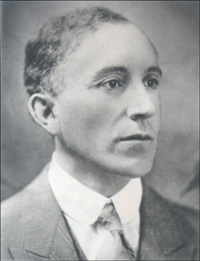
While many of them were on friendly terms outside their professional lives, a few harboured bitter enmity toward each other. This is inevitable when strong personalities, ideas and political opinions collide. On the whole, however, one could say that these translation artisans formed a fairly homogeneous and harmonious society of men of letters. Among their ranks could be found lawyers, doctors, bachelors of arts who had been educated at the classical colleges, and journalists—many journalists.
The female presence
But the proportion of women translators was small. By the 1940s, they represented only a modest 14% of all translation staff. Those who took up translation worked initially in the departments, where translation units began to appear in the early 1900s. Not until the end of the 1930s, however, did a female translator join Debates.
Évelyne Bolduc (1888–1939) was her name. The daughter of the Speaker of the Senate, the Honourable Joseph Bolduc, she was educated at Yale University and, in 1915–1916, collected folk tales and songs with anthropologist Marius Barbeau. In the early 1930s, she joined the Blue Book section, and her contract was renewed annually. While she was translating the Senate proceedings, from 1935 to 1937, she passed the Bureau’s recruitment exam but was not offered a position. In 1937, she finally joined the Debates Division, where she remained until her death in 1939.3
In 1943, along came Rosette Renshaw (1920–1997), who had worked as a translator for a year in the Department of National War Services after obtaining a Bachelor of Arts degree from McGill University in 1942. Since the Debates translators worked nights, their wives took a dim view of the fact that a woman was spending her nights in the company of their husbands—how times have changed. They were secretly and jealously distrustful of this woman who had managed to enter this men’s club.4 Rosette Renshaw would remain at Debates until June 1951, after which she continued her studies and made a teaching career for herself at the State University of New York, New Pfalz campus.
Other women would follow in the steps of these two trailblazers and join the Debates team: Gabrielle Saint-Denis in 1949; Irène de Buisseret in 1950; and Irène Arnould and Marie-Blanche Fontaine in 1952.
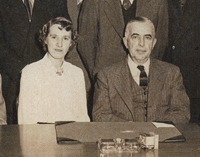
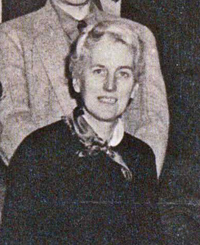
Education and innovations
In the absence of translation schools, recruits were introduced to the mysteries of government translation by their colleagues. A few took advantage of evening courses in translation given by Pierre Daviault (1899–1964) at the University of Ottawa starting in 1936.
In 1940, the Montréal Translators’ Society also began offering evening courses; two years later, the courses were moved to McGill University. In 1941, the Institute of Translation in Montréal was founded at Jeanne Grégoire and Georges Panneton’s initiative. This institute was incorporated into the University of Montréal’s continuing education department in the 1960s. Until 1967, those were the only places in Canada offering translation courses. They attracted mostly secretaries interested in improving their English and office employees who had been given translation work at their companies. As we will see, the first federal translators came more from press rooms than classrooms.
In 1967, everything changed and the period that some would be tempted to call the “heroic age of translation” came to an end, since, as we will see, the translation saga in the federal government would be punctuated by rocky episodes and dramatic gestures that made headlines and ignited passions.
For 100 years, the only technological innovations that benefited federal translators were the typewriter, first marketed in 1873 in the United States5—during the early years of Confederation, the clicking of translators’ typewriters could not be heard on the Hill for the simple reason that typewriters had not yet been invented—and the dictaphone, imported from New York in 1953 by Superintendent Aldéric-Hermas Beaubien (1890–1985).
A turning point
The history of federal translators can therefore be broken down into two major periods: before and after 1967.
Translation took off in a spectacular way after the Montréal World’s Fair, Expo 67, a culturally vibrant event that showcased Canada to the world as never before. In 1968, in response to an invitation by the Department of the Secretary of State, which had created a translation bursary program to encourage the recruitment of translators,6 the University of Montréal set up the first university translation program, which conferred a three-year degree.
The number of educational programs multiplied quickly to address the shortage of translators in Canada at the time. The figures speak for themselves. From 1968 to 1984, a new university translation program was created every year, a new bachelor’s degree, every two years, and a new master’s degree, every four years. The market was booming.
In 1969, in the wake of the Royal Commission on Bilingualism and Biculturalism, three language-related pieces of legislation7 were enacted, having a major impact on the evolution of translation in general and the Bureau for Translations in particular. The Bureau has always been an excellent gauge of the progress of official bilingualism in Canada. In less than 10 years, from 1964 to 1973, its budget literally exploded, jumping from $2 million to $15 million, and its workforce leapt from 339 to 1,118 employees.
Growth in all directions
This explosive growth was accompanied by two major reorganizations: a reclassification of translators in 1967 and the enactment of regulations to implement the Act respecting the Bureau for Translations in 1968. More than ever, translation was seen in the halls of power as an inherent part of political life in Canada and key to the overall aims of official bilingualism.
Even the creation of a Department of Translation was considered.8 Although the idea, which was put forward in 1965 in the House of Commons by Trois-Rivières MP Léon Balcer, appealed to Prime Minister Lester B. Pearson, it did not go any further.
The years that followed saw the development of terminology, owing to the increasing use of French in Quebec’s private sector9 and a Cabinet decision on November 7, 1974, that expanded the Bureau’s mandate to include responsibility for the quality and evolution of administrative language and its standardization. These years also witnessed a sharp increase in the number of specialized translation journals and reference works, a host of translation and terminology conferences, the emergence of the idea to use machine translation to speed up production,10 the development of office automation tools, terminology banks and computer-assisted translation, and the rise of the Web with its unrivalled resources.
During the same period, beginning in 1967, federal translators saw a significant increase in their salaries, and steps to obtain professional recognition from provincial legislatures were intensified,—ultimately leading to the creation of a reserved title in three provinces. Women were also entering the profession in larger numbers, a trend that grew in the 1980s and 1990s.
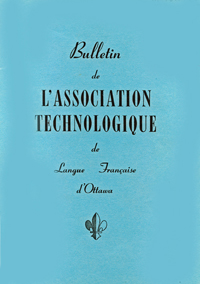
Apart from the evening courses in translation and the two translation publications that were created,11 all of the above changes took place after 1967. The context in which the translation profession was practised after this turning point was radically different from what it had been during the previous 100 years.
Our first glimpse into the world of federal translators will reveal some of the perks they enjoyed, along with a few amusing anecdotes. Without further introduction, let’s immerse ourselves in the spirit of the times reflected in charming old yellowed photos and faded postcards.
Perks
Hector Carbonneau, who joined the federal government in 1911 and was promoted to the position of translator in 1922, remembered how the staff in the two most prestigious divisions, Debates and Laws, enjoyed great freedom, no doubt owing to their proximity to and relations with the members of Parliament, ministers and senators whom they worked alongside on the Hill and whose words they translated on a daily basis.
These employees “[Translation] had free access to all the conveniences available to parliamentarians: the Library of Parliament, the reading room, the special gallery [in the House of Commons], not to mention the sorely missed House tavern, which was reduced to ashes when fire destroyed the Parliament buildings on February 3, 1916.”12 Since the fire occurred during World War I, a German act of sabotage was suspected, but this suspicion was never corroborated.13 The tavern mentioned by Hector Carbonneau was located in the basement and variously called the refreshments room, barroom, bar, taproom and tobacconist’s.
The list of perks that translators enjoyed prior to centralization does not end there. A few others were described by Rodolphe Girard (1879–1956):
[Translation] Every session, the senators, members of Parliament, parliamentary correspondents and translators from both Houses received huge cases bursting with top-quality stationery and various fine products, such as valises, sewing kits, toiletries, pocket knives, pens, wallets, etc.… We also had access to the stationery and office supply storeroom, which was amply stocked…. With just the Clerk of the House’s signature, we could obtain things that we could have easily done without. … At this very moment, I have on my worktable a superb oak file cabinet that I obtained from this government service. We enjoyed free postage, even for registered letters.14
Through the personal letters they exchanged on House of Commons letterhead, the translators of that time, such as Toussaint Gédéon Coursolles, Achille Fréchette, Louis Laframboise and Hector Carbonneau, provide us with tangible evidence of what Rodolphe Girard described in retrospect as misplaced government generosity.15
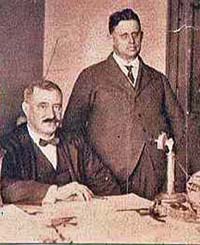
Some translators, so it seems, took advantage of their freedom in rather unusual ways. The head of the Laws Division, lawyer Oscar Paradis (1874–1937), who was also a musician in his spare time, habitually arrived at the office at 7:00 in the morning and started work right away. Around 11:00 a.m., he would put down his pencil, pull his cello out of a large cabinet and, gliding his bow across the instrument, play works by Bach, Boccherini or Brahms.16 It is not known, however, whether his colleagues appreciated this daily recital. It is possible they did, since translators, given their heightened perception of pleasing sounds and flowing sentences, generally appreciate fine music.
Squatters on the Hill
In the 1930s, during the Great Depression, two translators from Montréal hoped to save money by not renting a room in Ottawa. At the time, translators, especially those in the parliamentary units, did not all live in the capital. Some came to Ottawa only for the parliamentary sessions. Our two clever fellows, Charles Édouard Duckett (1886–1964) and Eduard Maubach (1894–1955), managed to slip a couch into a large storage room in the West Block, and it was on this makeshift bed that these two cash-strapped fellows spent their nights.
Their scheme worked beautifully until the day when one of them got up in the evening to go where even a king cannot send his valet and found himself face-to-face with the cleaning ladies, who, in a panic, bustled off to report the intruders.17 It is not known what became of the couch.
As for the two squatters, since their scheme did not appear to be shameful malfeasance, it was not held against them and they kept their positions. Duckett would later be promoted to the position of Privy Council translation unit head, and Maubach would remain, until the end of the war, the only translator in the Foreign Languages Division, where, incidentally, he finished his career.
Tit for tat
Translators have a reputation, and rightly so, for being fine writers and witty individuals who know how to use words to convey the slightest nuances. On a daily basis, they weigh words and their impact with “[Translation] an invisible set of finely calibrated intellectual scales.”18
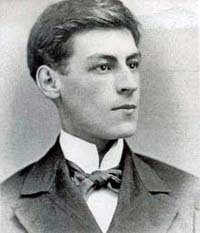
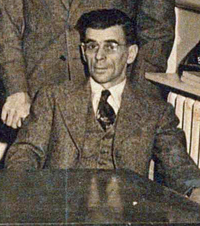
One day Rodolphe Girard had a verbal set-to with Pierre Daviault, who said to him, “[Translation] My dear fellow, you are committing an anglicism.” The author of Marie Calumet replied, “[Translation] I would like you to know, learned colleague, that I know my French.” Daviault then retorted, “[Translation] Your French? Obviously. But it’s standard French you should know.”19
I shall end the first article in this series with another amusing rejoinder. One day, the same Pierre Daviault asked Ernest Plante (1912-1993) to come to his office and told him, “[Translation] The dictionary indicates that the word you used in your translation is rare.” To this, the translator promptly replied, “[Translation] I know; that’s why I rarely use it.”20
The least one can say is that there was no lack of quick-witted comebacks among these translators!
I would like to thank Alain Otis from the University of Moncton for the comments and additional information he provided.
Illustration sources
Fig. 1 Centre d’études acadiennes, Fonds Hector-Carbonneau, P34-A3
Fig. 2 Centre de recherche en civilisation canadienne-française, CRCCF, Ph129-120, detail
Fig. 3 CRCCF, Ph129-121, detail
Fig. 4 Jean Delisle’s personal collection
Fig. 5 La Presse, April 5, 1924, detail
Fig. 6 Public domain
Fig. 7 CRCCF, Ph129-120, detail
Notes and references
- 1 Called the Blue Book section until the late 1920s, it translated all the parliamentary texts, except for the Debates.
- 2 Hector Carbonneau, “Souvenirs d’un traducteur et lexicographe,” Cultures du Canada français, No. 4, 1987, p. 80.
- 3 Letter from Alain Otis (October 23, 2012) to Jean Delisle (Gatineau).
- 4 Information gathered in 1983 from the widow of Superintendent Henriot Mayer (1908–1982).
- 5 The first electric typewriter appeared in 1914, and the first portable typewriter, in 1935.
- 6 Further to a Cabinet decision of October 25, 1967.
- 7 The Official Languages Act of New Brunswick, enacted by the Legislative Assembly of New Brunswick, the Official Languages Act, enacted by the Parliament of Canada, and the Act to Promote the French Language in Quebec (Bill 63), enacted by the National Assembly of Quebec.
- 8 House of Commons Debates, March 17, 1965, p. 12478.
- 9 Terminology even acquired the status of a new profession, recognized by Quebec’s legislature. See Jean Delisle, La terminologie au Canada. Histoire d’une profession, Linguatech, 2008.
- 10 House of Commons Debates, November 5, 1964, p. 9820; April 2, 1965, pp. 13175–13176.
- 11 The Bulletin de l’Association technologique de langue française d’Ottawa (1951–1957) and the Journal des traducteurs (1955–1965), the precursor to the journal Meta.
- 12 Hector Carbonneau, op. cit., p. 80.
- 13 “Fire on the Hill!,” The Canadian Encylopedia, http://www.thecanadianencyclopedia.com/featured/fire-on-the-hill.
- 14 “À Ottawa, il se fait des dépenses folles en cadeaux inutiles,” Le Petit Journal, November 13, 1949, Supplement, p. 15.
- 15 Ibid.
- 16 Anecdote related to the author by Wilfrid Michaud, 1983.
- 17 Anecdote related to the author by Frédéric Phaneuf, 1983.
- 18 Valery Larbaud, Sous l’invocation de saint Jérôme, Gallimard, 1942, p. 82.
- 19 Charles Michaud, “Matière et forme,” Mémoire de la Société royale du Canada, section I, 1945, p. 136. Reworked text of a talk given to the Association technologique de langue française d’Ottawa (ATLFO) December 17, 1943.
- 20 Anecdote related to the author by Frédéric Phaneuf, 1983.
© Public Services and Procurement Canada, 2025
TERMIUM Plus®, the Government of Canada's terminology and linguistic data bank
Writing tools – Favourite Articles
A product of the Translation Bureau


